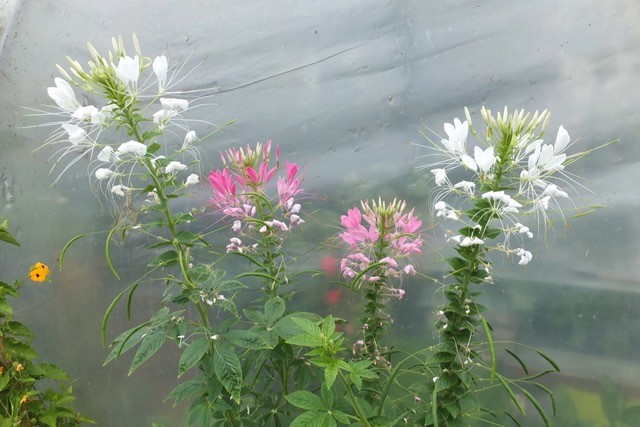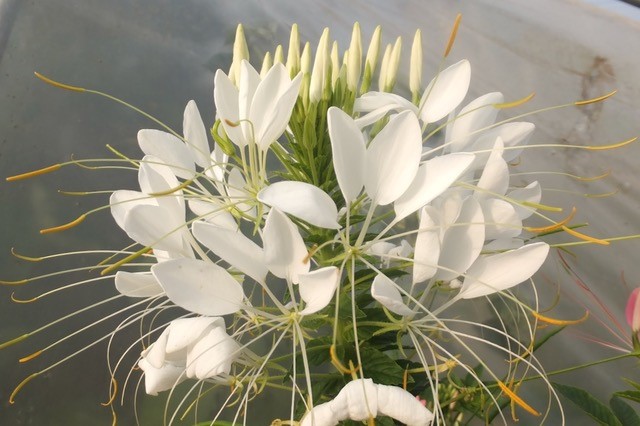
If you were a greenhouse gardener one hundred and fifty years ago you could have been growing twenty seven different species of the beautiful Spider flower. Listed in Paxton’s Botanical Dictionary as Cleome with another eight registered under the apparently near synonymous Gynandropsis there were three dozen or more available. Seventy five years ago Roy Hay in his Annuals cited seventy known, though concentrating on only four, while lamenting the then recent loss of Cleome rosea (which was advantageously spineless).
Now we are left with solely one species in commerce, Cleome spinosa (a.k.a C. pungens), though admittedly in a spread of varieties from white through pinks to red. Quite likely some species will have been re-classified in other genus however the vast majority just faded away and became lost to us, including beautiful yellow flowered ones from S. America.
Of course this is not the only genus to drop from favour, vast numbers of currently unknown plants were tried and deselected as others proved better or more reliable. And the fashion for amassing comprehensive plant collections also waned.

To be fair the Spider flower does have slight drawbacks: the stems have spines and the foliage has a smell disagreeable to many with an acrid taste. So you’d wonder why flowers and those leaves have been eaten in salads, well presumably in times of famine. The seeds of several species were used as a condiment, mustard and in curries. However I’d not recommend adding these to your diet just yet, but do grow some Cleomes for their beauty.
Although tender being annuals Cleomes are very easy to grow and quite tough. Sow seed in warmth in spring, pot up and plant three or five to a large heavy tub of any good compost. Give them a position in full sun then feed and water regularly. They will start flowering and carry on continually growing taller until expiring in autumn.
Cleomes look their best when emerging through other more staid foliage plants. If you’ve a sheltered warm garden you might even plant some out, they were once popular for municipal bedding (perhaps because their spines and smell proved usefully deterrent to dogs and vandals).
If you fall for Cleomes keep searching as very occasionally rare species are trialled by seed companies, one recently offered C. boliviensis from the Andes.


